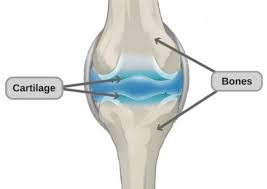What is the difference between bones and cartilage?
Cartilage and bones are specialized connective tissues known for offering support to organs and other tissues in the body.
The lesson provides information on the difference between bones and cartilage in tabular form as well as point form. Take the time to read through for detailed insight.

What Are Bones?
Bones are hard connective tissues made up of collagen and calcium phosphate. These rigid connective tissues help to form the skeleton of vertebrates.
According to research, an adult human being is said to have about 206 separate bones in their body. The femur is known to be the largest bone while stapes are the smallest bones.
Bones are said to have about five separate such as sesamoid, flat, long, short, and irregular. Also, 99 percent of the body represents the bones while one percent represents the blood.
Roles of Bones in the Body
- Offer structural support to the soft tissues and internal organs to enhance both contraction and relaxation.
- Offer maximum protection to tissues like bone marrow
- Responsible for giving the body shape
- Control the amount of calcium and phosphate in the body fluids
What Are Cartilage?
Cartilage is soft and firm connective tissue responsible for flexibility, bending, and muscle stretching in the body.
They are mainly found around the joints, ears, and spinal column to offer the required support that facilitates movement.
Some of the common types of cartilages include:
- Hyaline cartilage which occurs mainly along the bronchial tubes, larynx, nose, and trachea. They are also found at the end of long bones and embryonic skeleton.
- Fibrocartilage is normally tough and it tends to occur at the site of fractures, disc, and joints. They are responsible for rigidity and support for the attached structures.
- Elastic cartilage tends to be quite elastic and found in the external ear, auditory tubes, and epiglottis.
Note: Read the article on the difference between ligaments and tendons to avoid the common confusion experienced by students between the two structures.